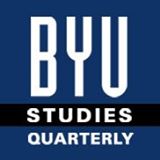BYU Studies

Event or Process? How “the Chamber of Old Father Whitmer” Helps Us Understand Priesthood Restoration
Keywords
BYU Studies, Whitmer, Priesthood Restoration
Abstract
Recent studies describing the restoration of the priesthood have noted and demonstrated that we have been anachronistically shaping our 1829 restoration narrative around twentieth-century notions that the Melchizedek Priesthood represents a separate “authority” or “power” that is distinctly independent from the body of ordained men (it has become something we hold rather than something we join). Jonathan Stapley argues that by the early twentieth century General Authorities explicitly defined priesthood as “the exclusive authority and power of God,” whereas before then it was used more ecclesiastically.1 Though Joseph Smith was certainly a restorationist, like many antebellum Americans, scholars have tended to frame his restorationism in terms of how the power or authority of God was restored (emphasizing priesthood as something you hold). For example, we focus on how John the Baptist restored an independent entity called the Aaronic Priesthood and how Peter, James, and John restored the higher companion priesthood called the Melchizedek Priesthood.2 If Stapley is correct, we have good reason to return to the historical record to discover more precisely what the restoration looked like.3 Perhaps we have been focusing too narrowly upon two events, when there was in fact a deeper sense of restoration that encompassed a far broader sense of theophany.
Recommended Citation
Hubbard MacKay, Michael
(2021)
"Event or Process? How “the Chamber of Old Father Whitmer” Helps Us Understand Priesthood Restoration,"
BYU Studies: Vol. 60:
Iss.
1, Article 4.
Available at:
https://scholarsarchive.byu.edu/byusq/vol60/iss1/4
